
Following last week’s visit to Connecticut-based Joeb Moore & Partners, we are moving our Meet Your Next Employer series to Southern California this week to explore the work of Bergmeyer.
From their studios across Los Angeles, Boston, and Columbus, Bergmeyer has built a diverse portfolio around their core pillars of creativity, connectedness, and curiosity. “We are a design collaborative; inspired through partnership, thoughtfully creative, inherently curious, and driven to fulfill our clients’ needs,” the firm notes about its philosophy.
Over on Archinect Jobs, they are currently hiring a Managing Director for their LA office. For candidates interested in applying for the position, or anybody interested in learning more about the studio’s work, we have rounded up five brewery and bar projects by Bergmeyer that demonstrate their design approach.
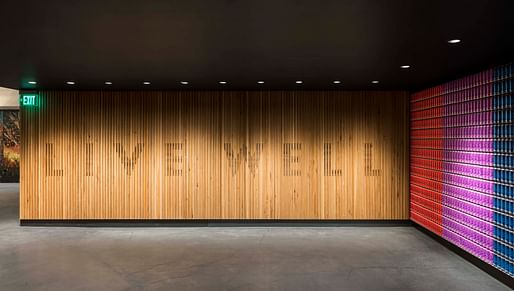
Tree House Brewing Company’s brief involved transforming a 100,000-square-foot former publishing company building into an immersive brand environment. The resulting space, which combines adaptive reuse with a brand-authentic atmosphere, holds a vibrant mix of colors that delivers a warm and inviting experience.
On entering, visitors encounter a retail area offering coffee service. A standout feature is the "Can Cave," a 350-foot passage leading from the entry to the taproom, adorned with environmental graphics, visual merchandising, and whimsical "Easter egg" graphics referencing the brand's can art.
The material choices are both visually appealing and future-focused, with potential for reuse and reengineering. The material palette includes reclaimed wood, polished and stamped concrete, blackened steel, and custom chandeliers with a powder-coated copper finish. 6,300 beer cans were upcycled in the interior composition.
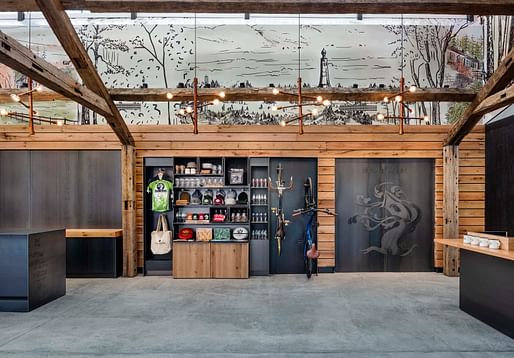
Boston Beer Company commissioned Bergmeyer to revamp their corporate office after a successful collaboration on their craft brewing Tap Rooms. The aim of the latest project was to create a unified and engaging office environment that would both showcase the company’s brands and promote a sense of community and collaboration.
The original 50,000-square-foot office was divided by a public corridor, creating two separate spaces with additional security barriers. The design team addressed this challenge by eliminating the barriers and restructuring the space to be more open, accessible, and inviting. This reconfiguration improved both the reception area's flow and the overall office security.

The workplace was modernized with upgraded conference rooms and workstations, including personalization features such as small meeting room "cabanas" and sit-to-stand desks. A highlight of the redesign is Sammy's Bar and Café, the company's new social hub where employees can relax and socialize. Featuring comfortable seating, artwork, and a selection of brand beverages, Sammy's holds a "community beer hall" ambiance, suitable for daily employee interaction and large all-office meetings.
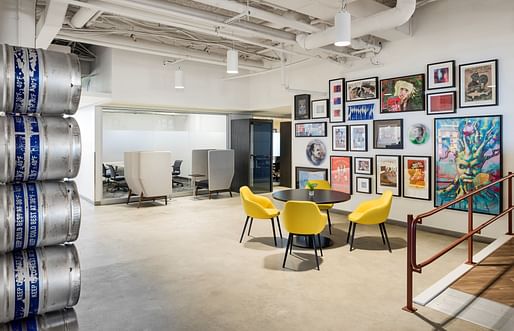
Situated in the Godfrey Hotel, itself housed in a historic 1904 landmark building at Boston's Downtown Crossing, the RUKA Restobar was designed to compliment the vivid, artfully presented dishes of Boston's inaugural Nikkei (Peruvian-Japanese) and Chifa (Peruvian-Chinese) dining establishment.
The design aesthetics juxtapose familiar and exotic elements, featuring contrasts such as a natural walnut bar top with intricate, geometric tile back bar, earthy clay tile and wood slats against vibrant reds and golds of hand-painted murals, and abstract hanging basket light fixtures offset by detailed concrete dragons adorning nearby columns.
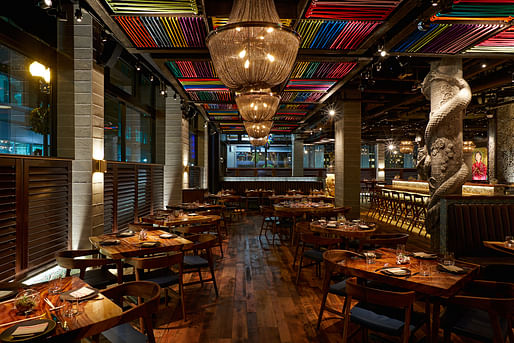
"Using artifacts, photographs, and memories from their travel to fuel the design direction, the RUKA team also recruited artisans to execute everything from artwork to earthenware, stemware to menu design," Bergmeyer explains. "With The Godfrey only recently opened and guest impressions of the utmost importance, the construction had to meet many goals. In addition to the usual pressures of schedule and budget, the entire design and build team worked effectively together to ensure the experiences of the guests and staff were not interrupted."

Located in a 1900s brick building in Boston's historic Harborwalk, Lolita Cocina & Tequila Bar offers a vibrant restaurant and tequila lounge. Holding a unique blend of old-world charm and contemporary flair, Lolita draws inspiration from El Día de los Muertos (The Day of the Dead), resulting in an immersive experience of color, texture, and intrigue to visitors.
The interior of the restaurant combines reclaimed church aesthetics with vibrant contemporary elements, including a main bar designed like an altar, leather furnishings, bright murals, and unique decorative pieces such as skulls adorned with red rose Mohawks. The entrance to the restaurant features a pathway leading patrons to the bar, surrounded by hand-painted "stained glass" artwork and dramatic murals.

The design team converted a 1902 building's basement space into a restaurant, replacing the irregular ground with a new flooring system. To take advantage of the basement's ceiling heights, areas were designed on different levels, creating intrigue for diners. Discrete signage and gas lanterns invite visitors from the public walkway nearby.
The restaurant also offers private areas designed for more intimate experiences. A large tequila room, hidden behind substantial wrought iron screening, serves as a private space for parties and group socializing.
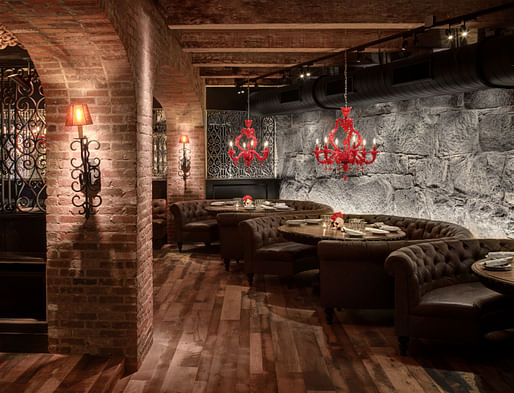
The James B. Beam Distilling Company (JBBDCo), formerly known as the Jim Beam campus, has a rich history of producing American whiskies. Recognizing a need to modernize while maintaining its heritage, Beam Suntory initiated an extensive, phased renovation of the campus.
In order to achieve these goals, JBBDCo enlisted the creative agency LOVE, which aimed to develop a comprehensive tour that would captivate both first-time and returning visitors. The shared vision of Bergmeyer and LOVE led to the development of key visitor areas throughout the campus, including the American Outpost visitor experience, the Fred B. Noe Distillery VIP experience, and The Kitchen Table restaurant.
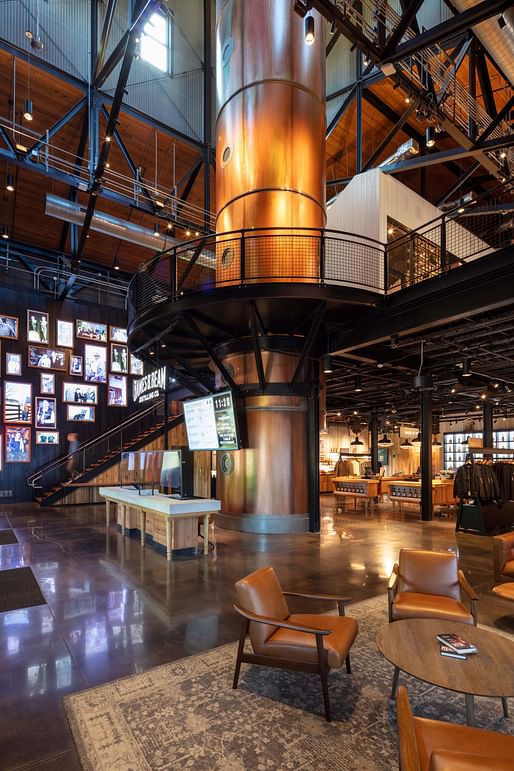
The American Outpost serves as the starting and concluding point of the tour, functioning as an interactive visitor center. It introduces guests to the extensive bourbon history of the Beam family and houses a retail space showcasing JBBDCo's complete whiskey range. At the Beam Made Bourbon stop, guests delve into the Beam family's bourbon-making heritage. Renovations were implemented around a still-functioning fermentation room, enabling visitors to learn about the distillation process.
The Casehouse, following the Beam Made Bourbon stop, is an interactive museum featuring JBBDCo's brands. It offers a multi-sensory educational experience about distilling bourbon, and visitors can fill their own barrels and bottles. Meanwhile, the Fred B. Noe Distillery advanced distillery is dedicated to Seventh Generation Beam Master Distiller Fred Noe. Completing the tour, visitors can dine at The Kitchen Table, a bar and restaurant located at the heart of the campus.
Meet Your Next Employer is one of a number of ongoing weekly series showcasing the opportunities available on our industry-leading job board. Our Job Highlights series looks at intriguing and topical employment opportunities currently available on Archinect Jobs, while our weekly roundups curate job opportunities by location, career level, and job description.
No Comments
Block this user
Are you sure you want to block this user and hide all related comments throughout the site?
Archinect
This is your first comment on Archinect. Your comment will be visible once approved.